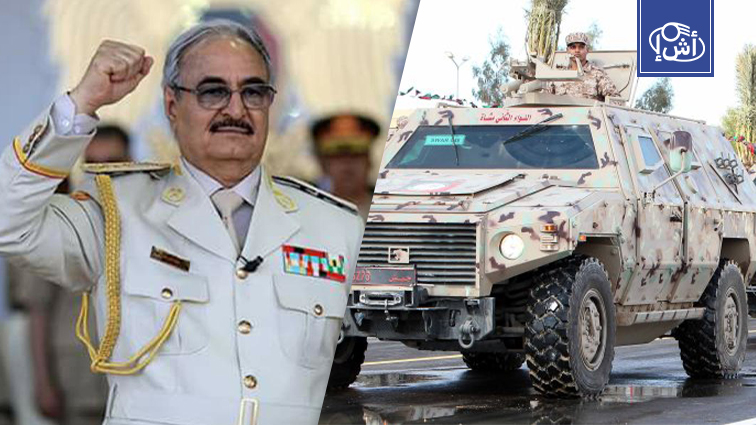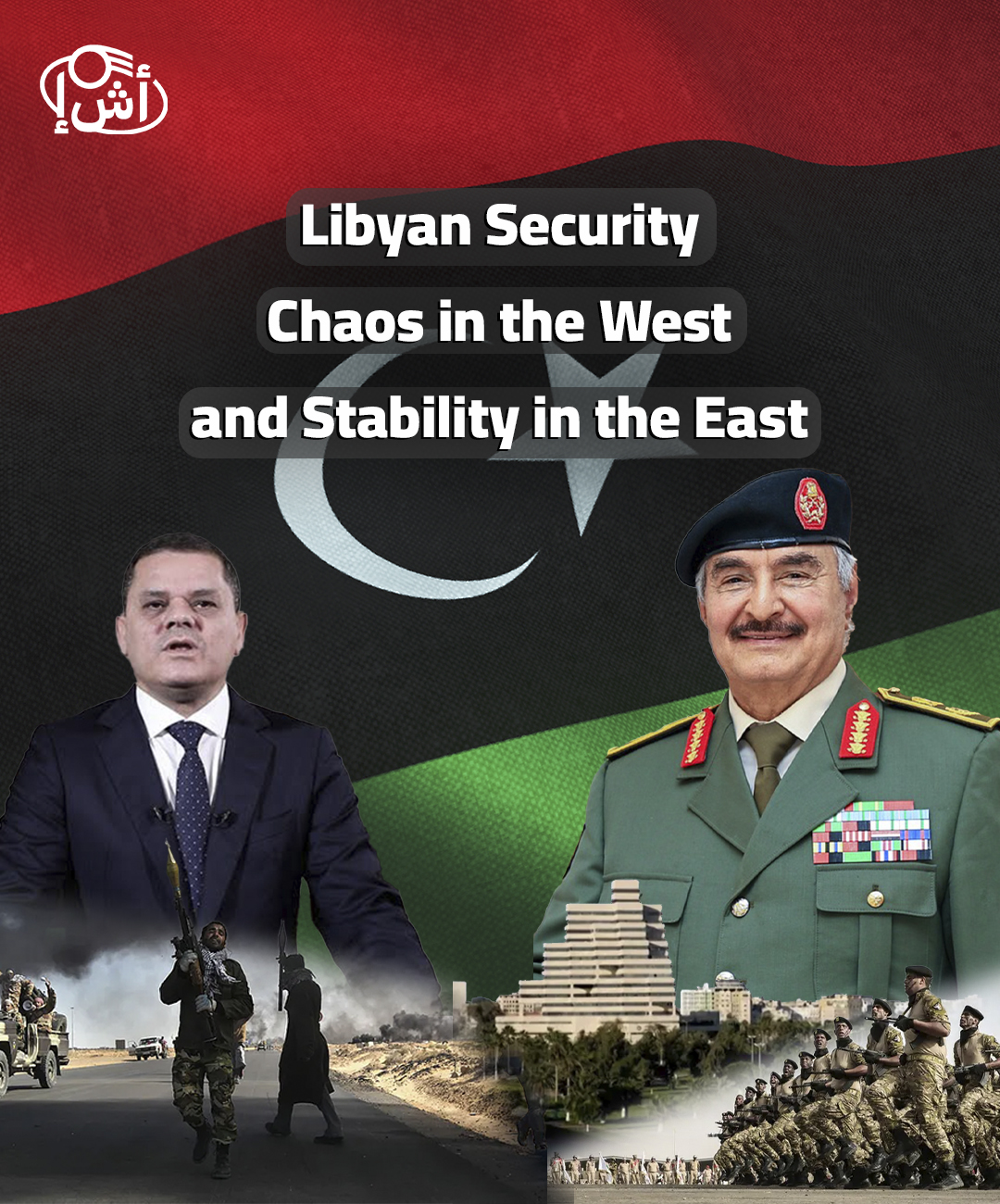Western Libya poses a double crisis through the intertwining of the political situation with the security situation, as the outgoing Dbeibeh government is not far from the state of chaos prevailing in Tripoli and its surroundings.
The phenomenon of militias in western Libya constitutes a paradox at the level of the state’s legitimacy, as the issue is not only related to the security situation, constant clashes and kidnappings, but goes beyond them to form a state of connection with state institutions that cannot work without agreement with the widespread armed groups that practically control all the details related to citizens.

Libyan officials in the West and social activists are constantly threatened, and government decisions are also subject to the distribution of armed forces. What happened at the Ras Ajdir crossing is a basic example of the ability of these groups to control the most important joints of the state. The border crossings, which are considered one of the symbols of sovereignty, were subject to the balance of militias and their conflicting interests.
The turbulent Libyan scene
The interim Libyan government headed by Abdul Rahim al-Keib between 2011 and 2013 found itself in a critical situation, as it had no better option than to pay salaries to the revolutionaries and militias to establish security. This measure, which was originally temporary, continued over the years, which contributed to establishing the presence of these groups on the ground. In 2014, chaos and terrorism reached their peak.
In the east, General Khalifa Haftar emerged as a force with a different administration than that in the west, attacking the extremist Islamic groups that controlled parts of the country, and launching Operation “Dignity”, which aimed to stop the spread of these groups, while in the west, the extremist Islamic groups controlled the government.

In 2016, Fayez al-Sarraj, the head of the Government of National Accord who was appointed after the Skhirat Agreement in Morocco in December 2015, reached an agreement with several armed groups in Tripoli, giving them legitimacy by making them units affiliated with the Ministry of Interior or Defense, which gave them greater influence within the state. When Abdul Hamid Dbeibeh took over as head of the transitional government in 2020, the presence of armed militias continued, and their seizure of government buildings and officials became a common practice.
The following chart shows the difference in stability between eastern and western Libya from 2011 to 2019
The path of chaos in western Libya
The political stumbling block in Libya since 2020 can be viewed from the perspective of security chaos. The government of Abdul Hamid Dbeibeh has narrow borders within its areas of control, where armed militias constitute part of its inability to deal with realistic political solutions to the Libyan crisis. It creates a balance with all the militias that have become a de facto force that acts according to its interests.

While the Tripoli government benefits from this situation for its survival, it has established relations with these groups by paying salaries to the group leaders instead of trying to despite the clashes that sometimes surface.

In practice, the kidnapping incidents of some officials provide indications that government agencies have clear connections with armed groups, as kidnappings often end with the release of the kidnapped person without any clear explanations, which raises questions about the ability of any government official to make decisions without taking into account the conditions of the security situation.
One of the most prominent mysterious kidnapping cases is what happened to the Director of the Information and Documentation Center at the Ministry of Economy and Trade, Hussein Al-Lamoushi, as he was taken by an armed group to an unknown location. The Director of the National Examinations Center, Ahmed Masoud, was also kidnapped after submitting his resignation and accusing employees of facilitating cheating.
However, the security situation in the West is not new, as it has clearly developed under the current Libyan government, and since 2020, security incidents have become part of all the details related to the work of the government or even the lives of ordinary citizens.
The people of western Libya are living in a state of insecurity that has caused heavy losses in lives and property. Clashes between armed militias have killed and injured many civilians, and kidnappings have cast a heavy shadow over the lives of citizens who live in constant fear. The following chart provides a clear approach to the reality of chaos in western Libya:

The graph shows, especially in the issue of kidnappings, a kind of stability, which suggests that the government does not have a clear policy to limit this phenomenon. As for other security disturbances, they have decreased slightly, but they are still within the limits of danger to become part of the lives of citizens. This matter created a distribution within the cities of the West within a map of criminal activities that can be read according to the following graph:

The chart provides a qualitative and quantitative analysis of security incidents in different areas of western Libya and presents the distribution and rates of criminal activities in these areas, which include Tripoli, Misrata, Zawiya, Sabratha, Tarhuna, and Khoms.
Tripoli witnesses the highest rate of violent clashes, and is also a center for kidnappings, while Misrata is a stronghold of many militias, and witnesses smuggling activities, but the focus of the militias there is on internal conflicts.
In the city of Zawiya, smuggling appears as the largest form of criminal activity, due to its strategic geographical location on the coast and seaports.
While Sabratha is a hotspot for human trafficking and kidnapping, which is linked to illegal migration routes across the Mediterranean, Tarhuna suffers from kidnappings due to tribal conflicts or local political tensions, and in the five cities there are relatively lower rates of security incidents, but they still witness some illegal activities.
A different picture in eastern Libya
While the west is suffering from the chaos of militias, many of its residents view eastern Libya as a region that enjoys a degree of stability and security.
Under the leadership of Khalifa Haftar, the east has been able to achieve a kind of stability that was absent from the west, although it previously suffered from the control of extremist groups that Haftar led a battle against and removed the specter of their violence from the east. Stability in eastern Libya is due to two main factors:
- The first is the establishment of a strong and unified army, unlike the east, which relied on the establishment of “battalions” with different names, most of which depend on people close to either the prime minister or the leaders of armed groups. It is sometimes difficult to distinguish between regular units and the rest of the militias due to their intertwining.

- The second is Haftar’s reliance on Libya’s own power instead of relying on European or American policies, The connection with the east is based on policies that depend on the full Libyan interest, and alliances with countries that do not have any colonial past in Libya.

The government of western Libya is not only unable to collect weapons and end the phenomenon of armed groups, but also, unlike the situation in the east, it does not have the internal will to chart a balanced Libyan path and sees the widespread militias as part of the justification for their existence. Although the United States has restructured some security agencies, in the end it only viewed the matter within the framework of its ability to achieve its interests, and the picture in the east is completely different. Putting Libya’s interests first has made Benghazi capable of maintaining security and achieving the interests of Libyans in eastern Libya in general.
By Mazen Bilal
Warnings about the impact of American support on the stability of Libya
